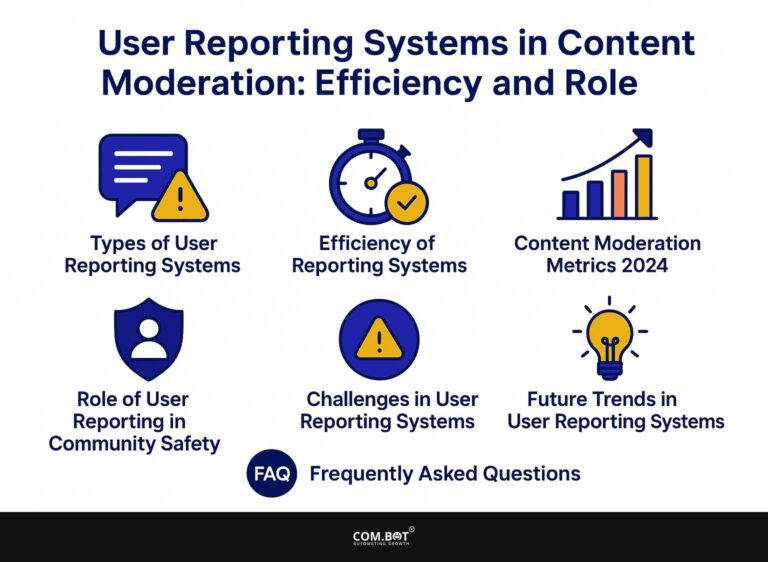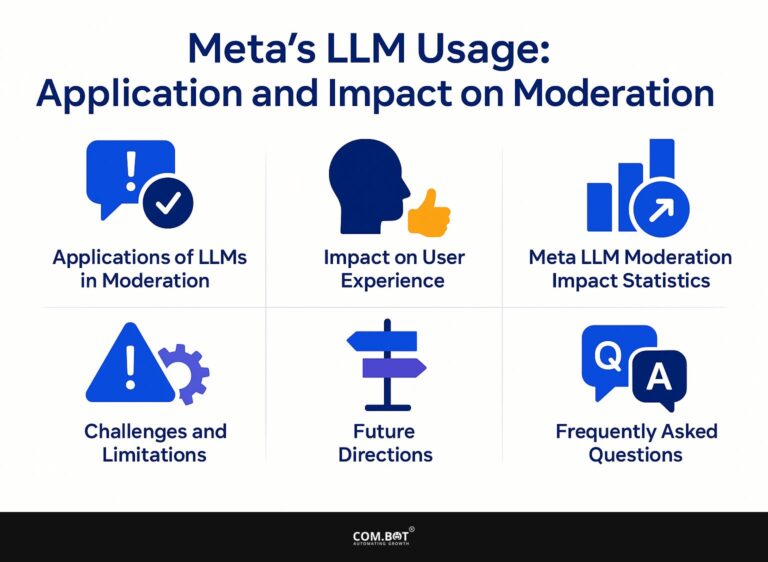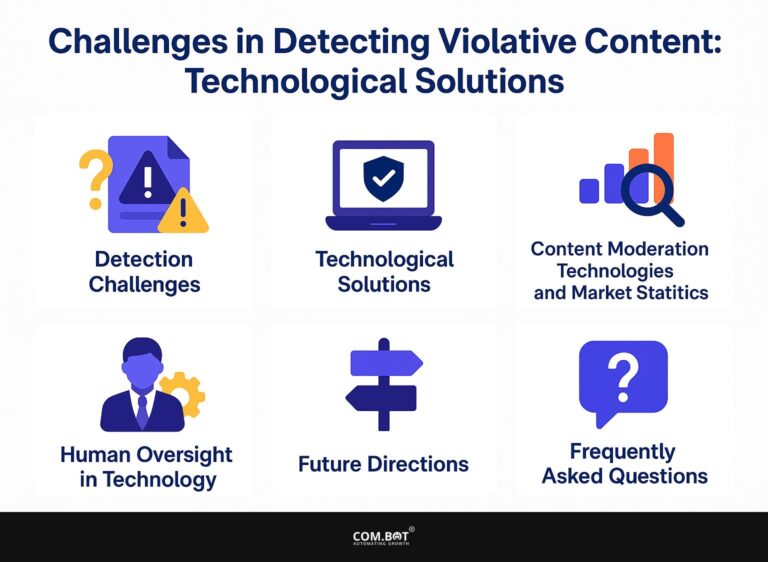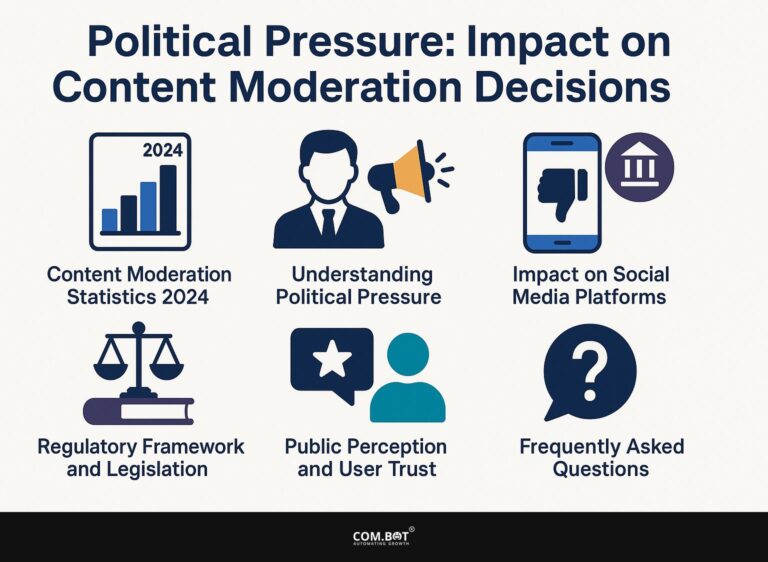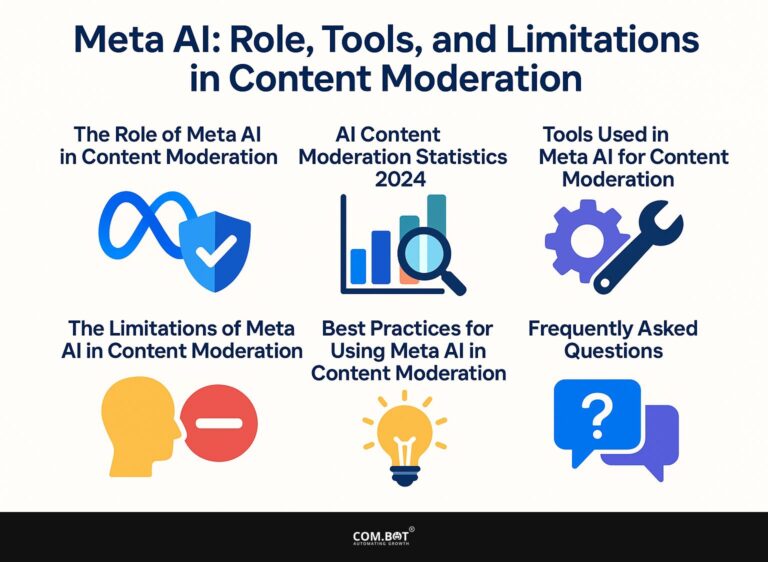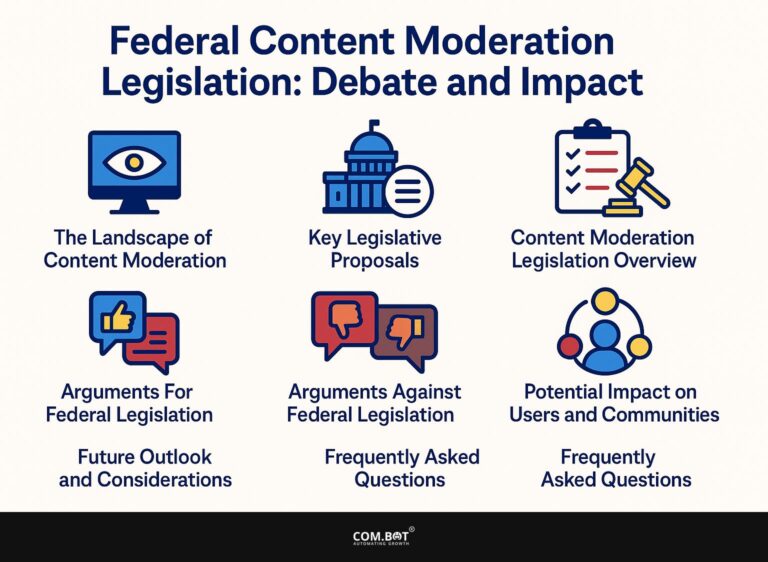AI Bias in Content Moderation: Examples and Mitigation Strategies
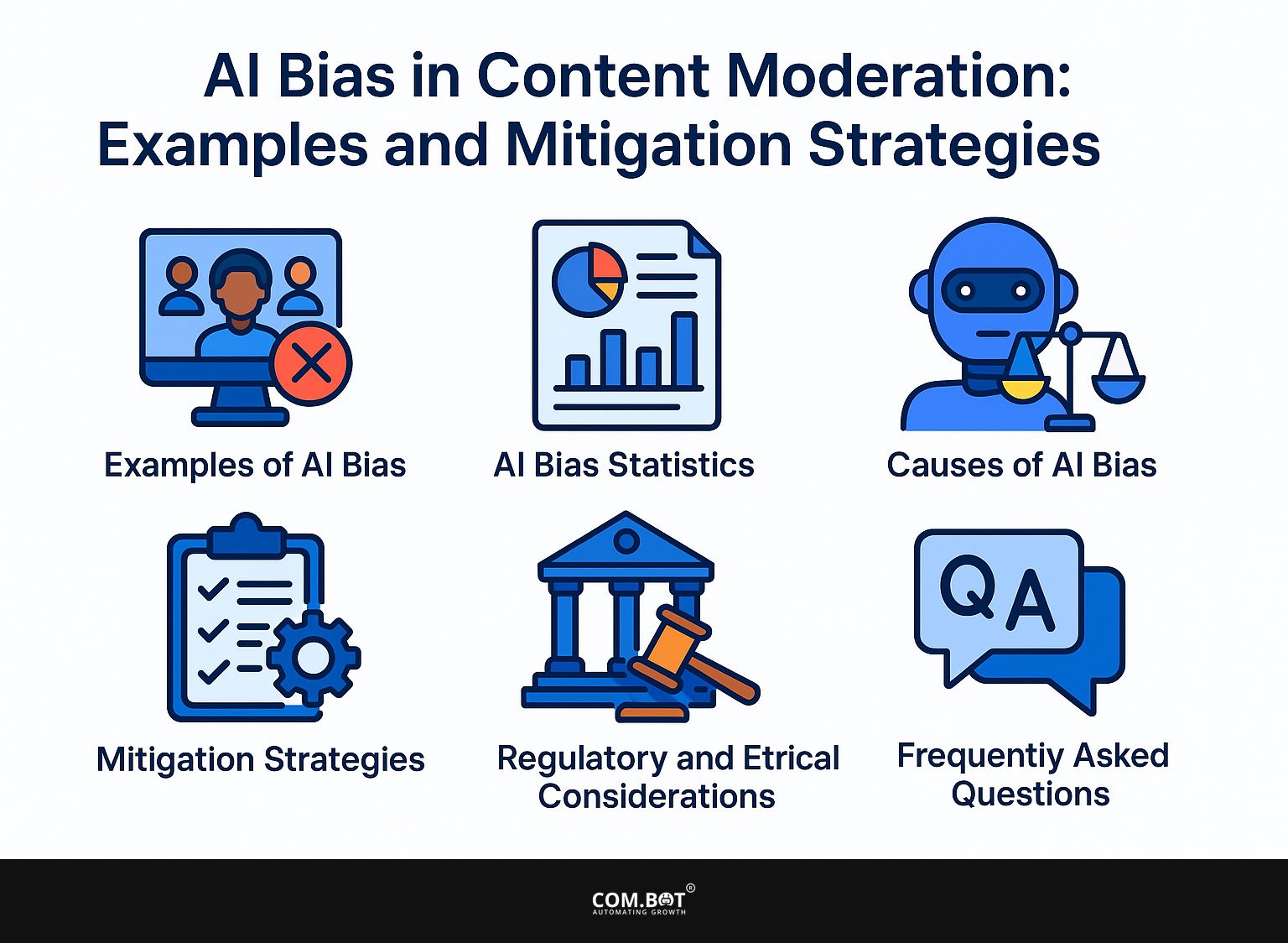
In the fast-changing world of online platforms, AI systems used for managing content can unintentionally support biases in digital material. This article looks at real examples of AI bias and how it affects marginalized communities, stressing the need for strong solutions to address these issues.
Learn how recognizing and dealing with these biases can result in fair and clear content moderation practices, making sure technology supports different voices instead of suppressing them.
Key Takeaways:
- AI bias in content moderation can have harmful consequences for marginalized communities, highlighting the need for addressing this issue.
- Data quality and algorithm design are key factors that contribute to AI bias in content moderation.
- Using strategies like increasing data variety and checking algorithms can reduce AI bias in content moderation.
- 1 Examples of AI Bias in Content Moderation
- 2 AI Bias Statistics in Content Moderation
- 3 Causes of AI Bias
- 4 Mitigation Strategies
- 5 Regulatory and Ethical Considerations
- 6 Frequently Asked Questions
- 6.1 1. What is AI bias in content moderation?
- 6.2 2. What are some examples of AI bias in content moderation?
- 6.3 3. How does AI bias in content moderation impact society?
- 6.4 4. What are some potential mitigation strategies for AI bias in content moderation?
- 6.5 5. Who is responsible for addressing AI bias in content moderation?
- 6.6 6. What can individuals do to combat AI bias in content moderation?
1. Definition of AI Bias
AI bias happens when a computer program gives skewed results because of wrong beliefs used during the learning process. For example, the COMPAS algorithm, used in criminal justice for risk assessments, has been criticized for racial bias, disproportionately labeling Black defendants as higher risk.
Another case is facial recognition technology, which has shown significant errors in identifying women and people of color, resulting in wrongful accusations. Dealing with AI bias needs thoughtful choice of data, thorough checks for equal treatment, and regular watching.
Tools like Fairness Indicators and AI Fairness 360 can help assess the biases in your algorithms and improve their reliability.
2. Importance of Addressing Bias
Dealing with AI bias is important to make sure AI decisions are fair and transparent, which helps protect user rights and supports the ethical creation of AI. This focus is particularly important as findings indicate that 60% of Americans are concerned about potential bias in AI systems.
To deal with this, companies should regularly check their algorithms with tools like [Fairness Indicators](https://github.com/tensorflow/fairness-indicators) or [AIF360](https://aif360.mybluemix.net/), which help identify differences in decision-making processes.
Involving different teams in AI development can bring more varied viewpoints, showing a wider set of experiences and cutting down on bias. It’s essential not just for compliance with regulations like the U.S. Algorithmic Accountability Act, but to build public trust in technology.
Examples of AI Bias in Content Moderation
AI bias shows up in different forms in content moderation on social media, often unfairly affecting marginalized communities. This becomes particularly complex when considering the role of Meta AI in moderating content, where tools and limitations can significantly influence outcomes.
AI Bias Statistics in Content Moderation
AI Bias Statistics in Content Moderation
AI Bias and Content Moderation Statistics: Content Moderation by Machines
AI Bias and Content Moderation Statistics: Elections and Deepfake Impact
The AI Bias Statistics in Content Moderation give an overview of the issues and changes involved in using artificial intelligence (AI) to control online content. It’s important to learn about the biases and limits in AI systems as technology plays a bigger role in content moderation.
AI Bias and Content Moderation Statistics suggest that 100% of content moderation decisions are made by machines. Using AI shows how well automated systems can handle large tasks, but it also brings up worries about biases that could impact how accurate and fair decisions are. AI systems can quickly handle large amounts of data, but they can also unintentionally show or increase societal biases found in their training data.
- The statistics indicate the prominence of different types of influencers: 54% are nano-influencers, while 33% are micro-influencers. This indicates a wide range of influencers where those with a smaller following play an important role in the online system. Nano-influencers, with their specific audiences, offer chances for direct interaction.
The section on Elections and Deepfake Impact reveals critical findings: 100% of U.S. politicians are impacted by fake endorsements. This highlights a rising worry about the truthfulness of online information and the chance for false details to influence what people think. The widespread use of deepfakes and their effect on politicians require strong detection methods and actions to protect the fairness of elections.
- Additionally, the data indicates that 50% of languages have less fact-checking than English. Limited resources make non-English-speaking areas particularly susceptible to unchecked spread of misinformation. Fixing this gap is important so everyone can get accurate and checked information in their own language.
In conclusion, the data on AI Bias in Content Moderation highlights the mixed effects of AI in managing digital systems. While AI improves how things are done, it also brings issues that need careful handling to reduce bias and misinformation, making sure content moderation is fair and correct across different online platforms.
1. Case Study: Social Media Platforms
Research shows that platforms like Facebook and Twitter have faced backlash for allowing biased AI algorithms to dictate content visibility and moderation decisions.
For example, studies indicated that Facebook’s algorithm disproportionately flagged content from Black users during the Black Lives Matter movement, claiming it violated community standards. Similarly, LGBTQ+ advocacy posts were often suppressed in favor of more mainstream content, limiting visibility. These biases arise from training data that underrepresent certain demographics.
To fix these issues, platforms can use different data sets when training algorithms, employ human moderators with sensitivity training, and frequently review algorithms to make sure they are fair. Transparency about moderation criteria also helps rebuild trust among affected communities.
2. Impact on Marginalized Communities
The consequences of AI bias in content moderation often disproportionately affect marginalized communities, leading to increased discrimination and censorship. For instance, a 2022 study by Fiesler et al. highlighted how Black and LGBTQ+ users faced higher rates of account suspension for content that violated vague community guidelines.
Tools like automatic keyword filters can misunderstand the meaning and incorrectly label harmless conversations about identity as dangerous. The report emphasized the need for more human oversight and inclusive training data to reduce these biases.
By including different viewpoints when creating algorithms, platforms can help protect vulnerable groups and promote fairer online interactions.
Causes of AI Bias
AI bias is caused by different connected reasons, mainly focusing on data quality, how data is represented, and the choices made in designing algorithms. This approach aligns with the principles outlined in our analysis of Meta AI: Role, Tools, and Limitations in Content Moderation, which explores how AI systems like those used by Meta address these challenges.
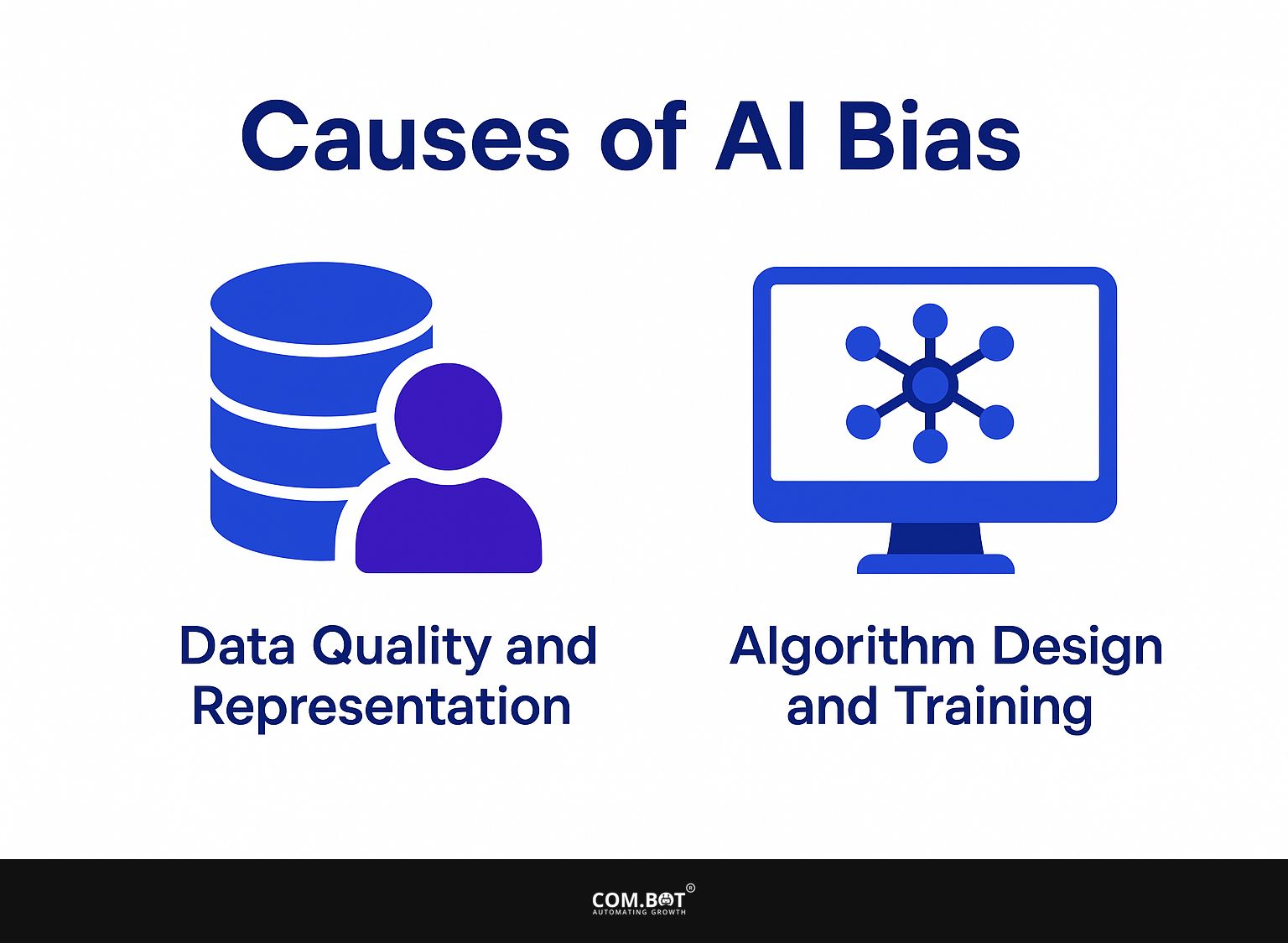
1. Data Quality and Representation
The quality and representation of training data are critical factors influencing algorithmic outcomes, with poor data quality leading to biased outputs.
To improve data quality, implement these actionable strategies:
- Gather data from different groups of people to include a range of viewpoints.
- Regularly review your training data to find any gaps and biases; tools like DataRobot can make this process easier.
- Get experts in the field to take part in collecting your data so it stays relevant and correct.
By using these methods, you improve your algorithms, which reduces possible biases and enhances their performance.
2. Algorithm Design and Training
Algorithm design choices significantly contribute to AI bias, as poorly conceived algorithms can exacerbate existing societal biases. To counteract these biases, designers should implement fairness metrics during the training phase.
For instance, using tools like AIF360 or Fairlearn can help identify and mitigate bias in datasets. Designers should establish benchmarks for fairness and regularly evaluate model outcomes across different demographic groups.
Working with different groups to review can reveal unnoticed biases in algorithms. By following these approaches, designers improve the likelihood of creating fair AI systems that better reflect the diversity in society.
Mitigation Strategies
It’s important to address AI bias by using effective strategies. These strategies should focus on increasing the variety of data and carefully checking algorithms. For a deeper understanding of how AI impacts misinformation, you might find our exploration of AI Bots: Impact on Misinformation and Mitigation Strategies insightful.
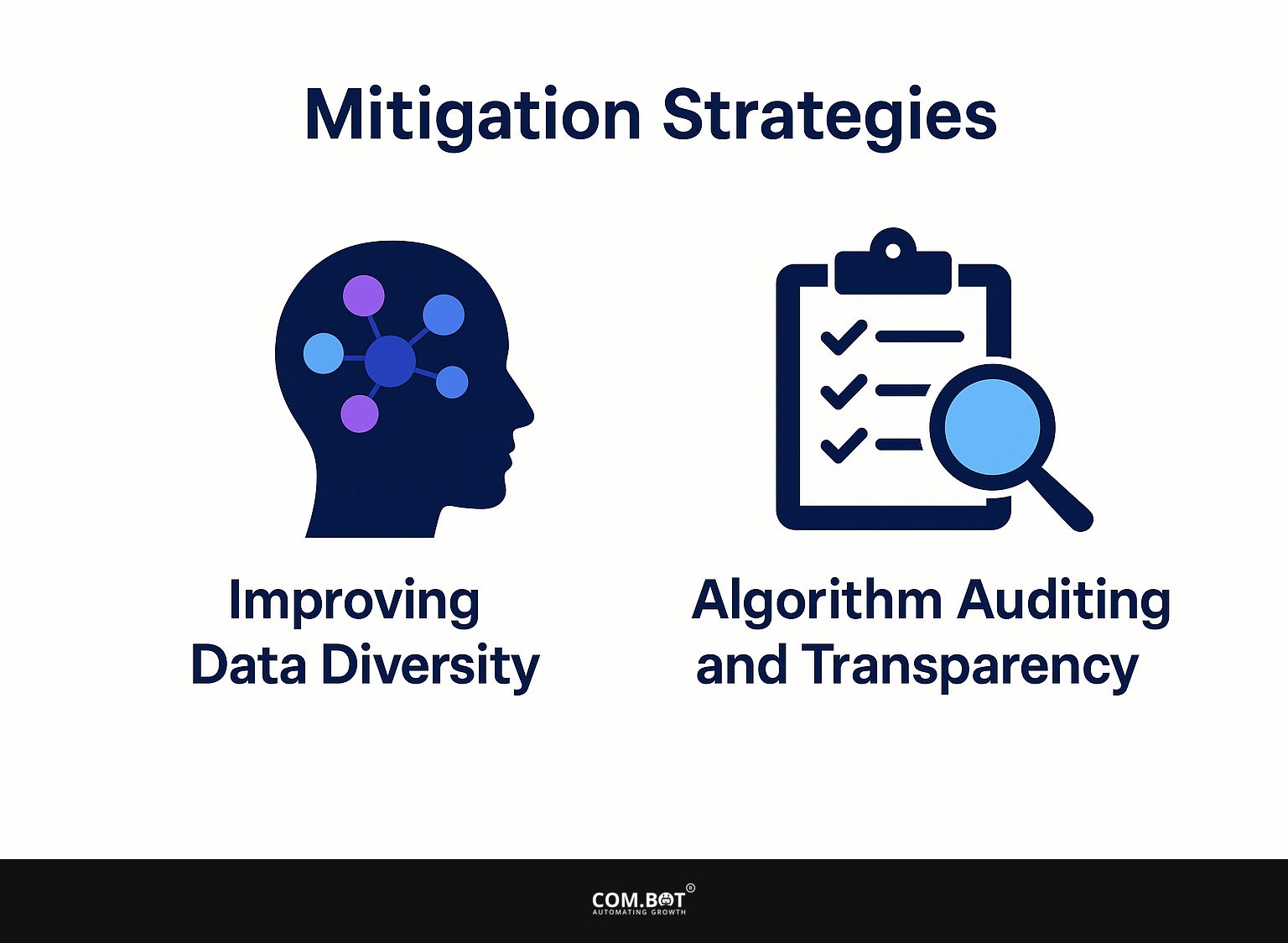
1. Improving Data Diversity
Ensuring data diversity involves creating training datasets that include a wide range of people and perspectives to reduce bias. To achieve this, organizations should collaborate with diverse stakeholders, such as community groups and academic institutions, to gather varied data.
Utilizing explainability tools, like LIME or SHAP, can help identify and address potential biases in algorithms. Consider implementing a continuous feedback loop where user experiences inform dataset adjustments.
For example, if a model doesn’t perform well for a certain group, check the dataset for missing information and look for more data to improve representation.
2. Algorithm Auditing and Transparency
Regular checks of algorithms and openness evaluations are essential to find and fix biases in AI systems.
To carry out a useful audit, follow these steps:
- Start by using tools such as IBM’s AI Fairness 360, which offers methods to check datasets for bias.
- Next, check how the model works using Explainable AI methods to find unfair patterns.
- Involve stakeholders at each stage to collect various opinions and carry out a complete evaluation.
- Frequently update your observations and change your algorithms based on feedback to address new biases.
Using these practices makes AI more fair and increases responsibility.
Regulatory and Ethical Considerations
Be aware of and follow rules and ethics when creating AI systems to reduce bias. A key consideration involves understanding the tools available for content moderation. For an extensive analysis, our comprehensive study of Meta AI’s role in content moderation examines how these systems manage bias and ethical considerations.
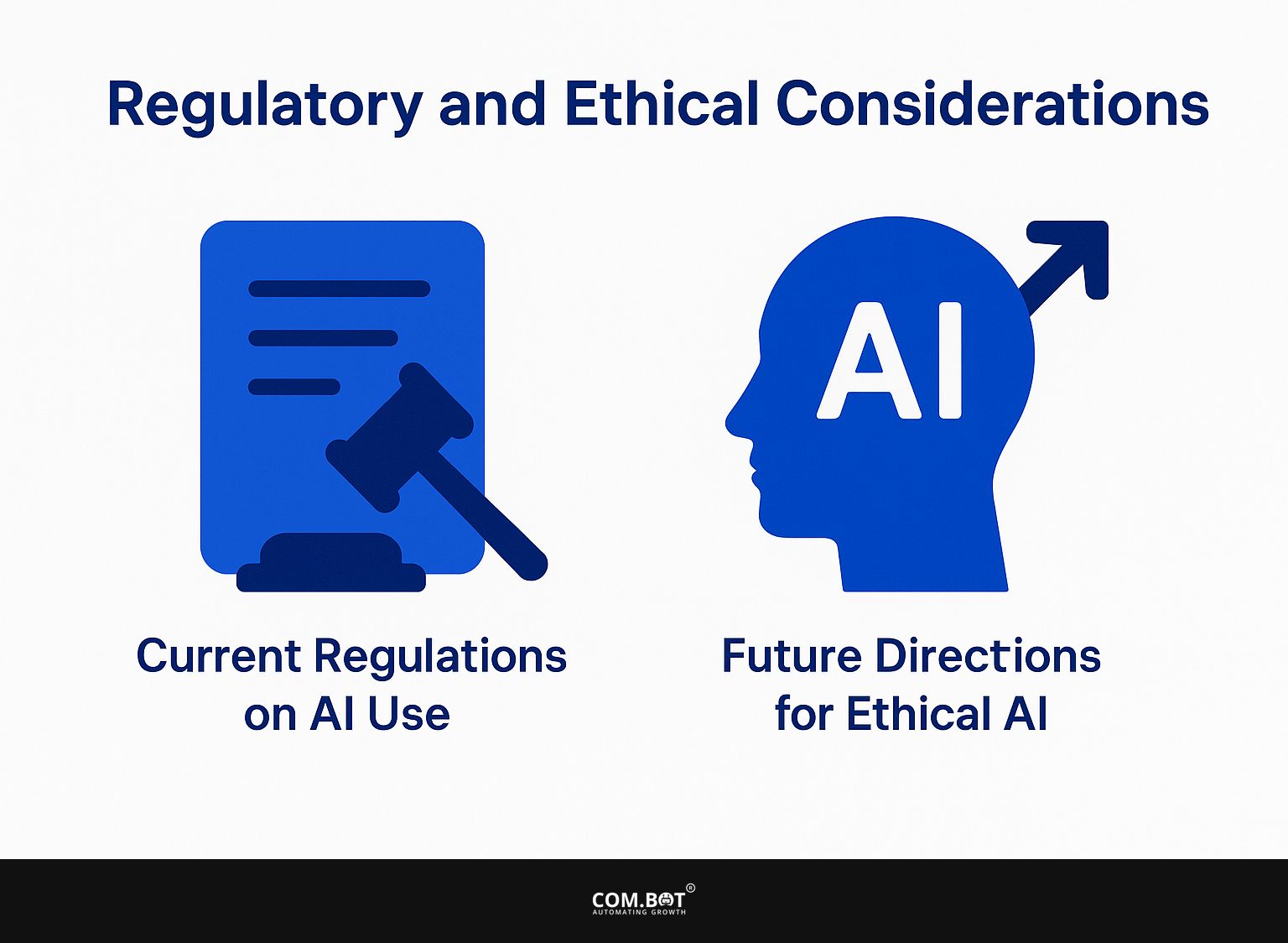
1. Current Regulations on AI Use
Rules like the GDPR and AI Act demand that companies follow strict guidelines to make sure AI is used ethically and responsibly. These regulations require companies to implement clear data governance policies and transparency measures.
For instance, under GDPR, organizations must obtain explicit consent for data processing, while the AI Act mandates risk assessments for AI systems.
Companies can use tools like OneTrust to handle compliance tasks or TrustArc to monitor data subject requests. Creating a compliance team can help follow these regulations properly.
Failing to follow the rules can lead to large penalties, so AI developers need to stay up-to-date and take action on changing legal rules.
2. Future Directions for Ethical AI
The upcoming development of ethical AI will probably focus more on fair algorithms and clear AI methods in different sectors. For these progressions to happen, important groups like governments, businesses, and the general public need to work together.
Rules may change to require checks for bias, clear data usage, and AI models that are easy to understand. For instance, the EU’s AI Act is a step towards setting stringent AI regulations, encouraging businesses to prioritize ethical guidelines.
Companies can adopt tools like Fairness Indicators or AI Fairness 360 to assess their algorithms for bias, while engaging in continuous dialogue with consumers to build trust and accountability in AI systems.
Frequently Asked Questions
1. What is AI bias in content moderation?
AI bias in content moderation means the unfair treatment of specific groups or people by automated systems that control online content. This happens when the algorithms in these systems learn from biased data or do not include different viewpoints, which results in wrong or unfair decisions.
2. What are some examples of AI bias in content moderation?
An example of AI bias in content moderation is the use of facial recognition technology, which has been found to have higher error rates for people of color and women. A different case is using computer methods to find hate speech, which often unfairly targets content from minority groups.
3. How does AI bias in content moderation impact society?
AI bias in content moderation can perpetuate systemic discrimination and reinforce harmful stereotypes. It can also silence the voices of marginalized communities and limit their ability to participate in online spaces. It can also result in censorship and limit free speech.
4. What are some potential mitigation strategies for AI bias in content moderation?
Potential ways to reduce AI bias in content moderation include using a wide range of data to train algorithms, frequently checking and reviewing how automated systems perform, and including people with different backgrounds in creating and applying these systems.
5. Who is responsible for addressing AI bias in content moderation?
Everyone who develops, uses, or applies automated content moderation systems must work to fix AI bias. This includes tech companies, governments, and individuals who use or are affected by these systems.
6. What can individuals do to combat AI bias in content moderation?
People can learn about AI bias, oppose unfair decisions made by automated systems, and back actions to hold tech firms and governments responsible for fixing bias in content moderation. They can support a variety of backgrounds and perspectives in creating and applying these systems.
